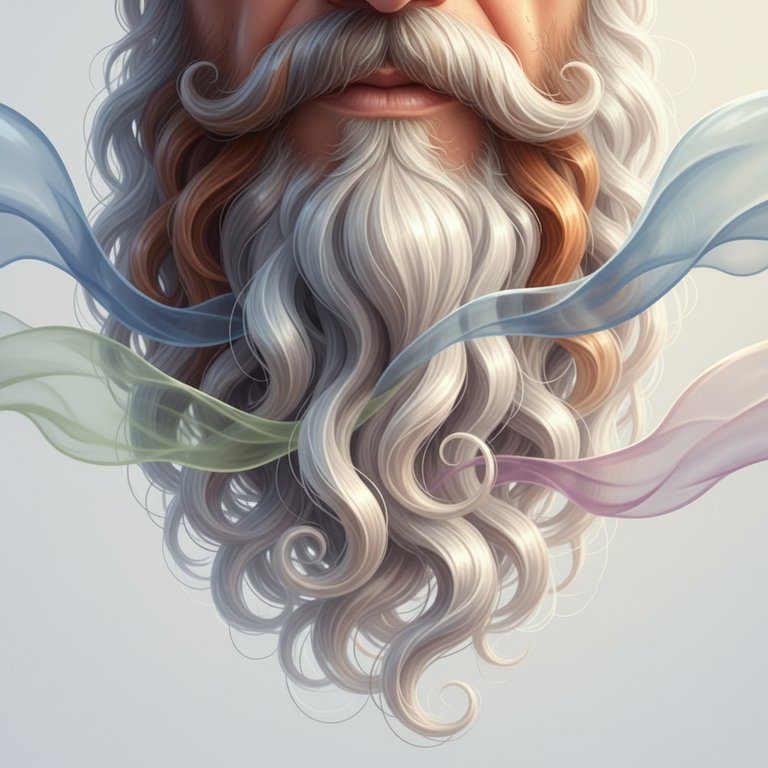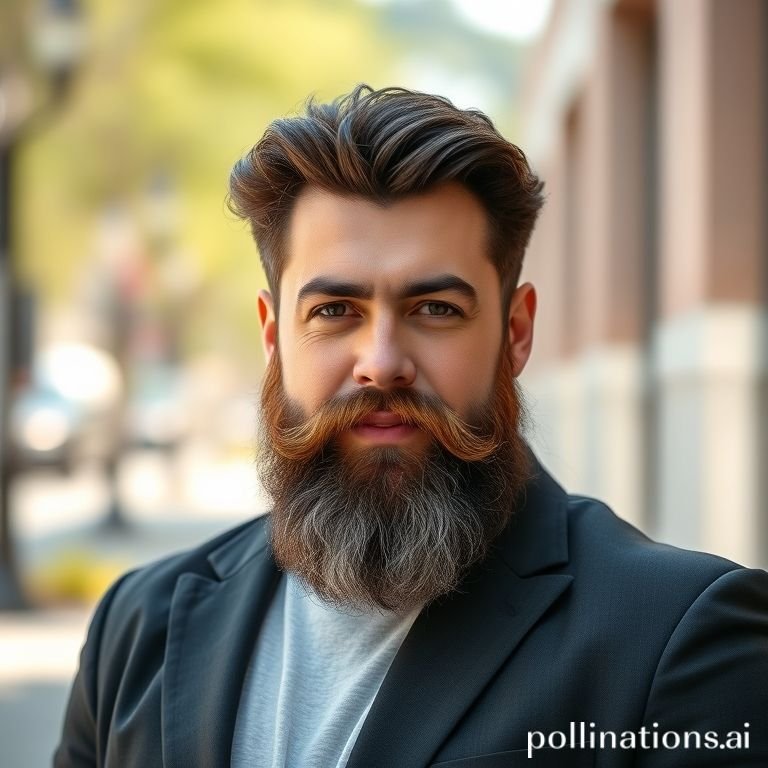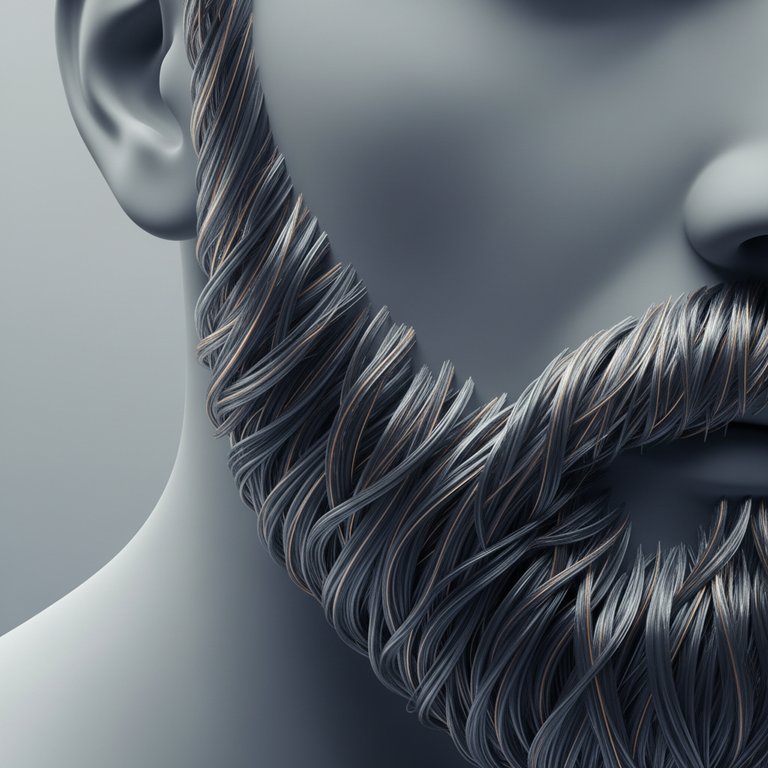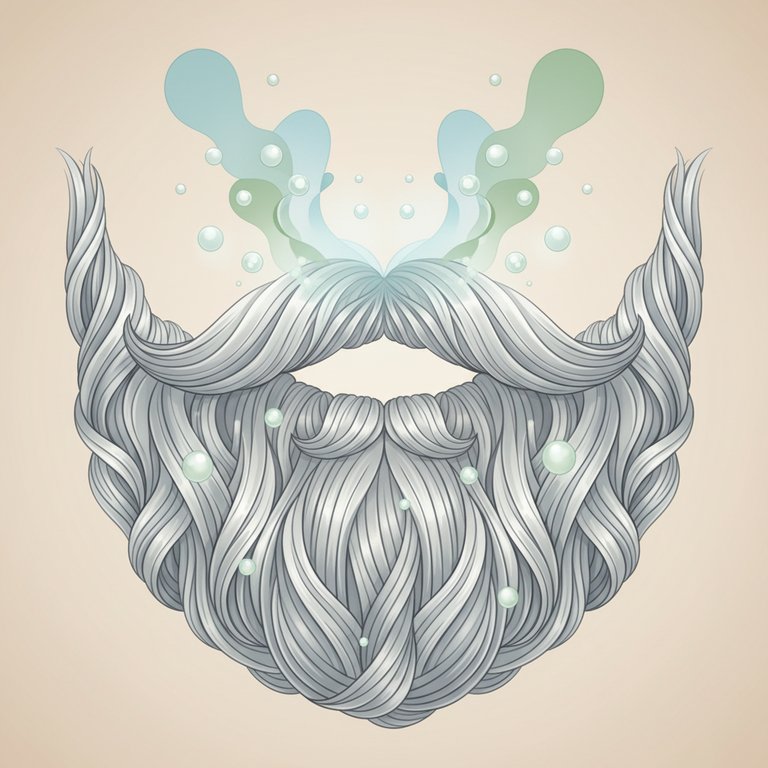Hey there, fellow beard enthusiast! Ever caught a glimpse of your magnificent mane in the mirror and noticed a new silver strand winking back at you? And then, almost immediately, your mind jumps to that big project deadline or that recent stressful situation? You’re not alone. It’s a common question that pops up in many a beard-growing journey: "Can stress cause my beard to turn gray faster?"
It’s a topic that sparks a lot of chatter in the beard community, and honestly, it makes a lot of sense why we'd connect the dots between feeling stressed and seeing those distinguished grays appear. After all, stress seems to affect everything else, right? So, let’s dive in, grab a comfy chair, and explore the fascinating world of beard color and what might (or might not) be speeding up its transformation. We’ll keep it casual, friendly, and shed some light on this hairy subject without getting too technical or serious.
The Science Behind Your Beard's Color (Simplified!)
Before we talk about stress, let’s quickly understand how your beard gets its awesome color in the first place. Think of your hair color as a masterpiece painted by tiny little artists called melanocytes. These special cells live in your hair follicles (the tiny pockets in your skin where hair grows) and produce pigments called melanin.
There are two main types of melanin:
- Eumelanin: This gives your beard darker colors like black and brown. More eumelanin means darker hair.
- Pheomelanin: This is responsible for red and yellow tones.
The unique mix and amount of these two melanins determine your specific beard color, whether it’s a deep raven, a fiery ginger, a warm chestnut, or a sunny blonde. As you get older, these melanocytes naturally start to slow down and eventually stop producing melanin altogether. When that happens, new hair grows without pigment, appearing white, silver, or gray. It's a natural part of life, like fine wine getting better with age!
Stress and Your Strands: What's the Connection?
Okay, so we know how color works. Now, back to our burning question: Can stress cause your beard to turn gray faster? This is where it gets a little nuanced, and honestly, it's a topic of ongoing discussion. While genetics and age are undeniably the biggest players in when and how quickly your beard goes gray, there's a perceived connection between chronic stress and the acceleration of this process.
Think about it: when you're super stressed, your body goes into a kind of "fight or flight" mode. This can affect various bodily functions, and some believe it could potentially impact the health and function of those melanin-producing cells in your hair follicles. It's not about stress *directly* turning a hair gray overnight, but rather how prolonged periods of high stress might influence your body's overall systems, potentially creating an environment where melanocytes are less efficient or their lifespan is shortened.
It’s like this: if your body is constantly under pressure, it might divert resources to more critical functions, and keeping your beard vibrantly colored might not be its top priority. While the exact, direct mechanism is still being explored, many people observe that periods of intense stress seem to coincide with an increase in gray hairs. It's an interesting observation, and while we can't make definitive claims, it certainly suggests that managing stress is a good idea for overall well-being, which, in turn, can contribute to a healthier-looking beard.
Beyond Stress: Other Factors Influencing Graying
While stress might play a supporting role, it’s crucial to remember the main stars of the show when it comes to graying:
- Genetics: This is by far the biggest predictor. Take a look at your parents or grandparents. When did their hair start to gray? Chances are, your timeline will be pretty similar. It’s all written in your DNA!
- Age: It’s simply a fact of life. As we age, our melanocytes naturally become less active and eventually retire from their pigment-producing duties. For most guys, gray hairs start making their appearance in their 30s, but it can vary widely.
So, while stress might be a potential accelerator, it's not usually the root cause. Your genetic blueprint and the natural aging process are the primary drivers behind your beard's silver transformation. Embracing this natural journey is part of the fun of growing a beard!
Embracing the Journey: A Step-by-Step Guide to a Happier Beard (and You!)
Whether stress plays a role or not, taking good care of yourself and your beard is always a win-win. Here’s a step-by-step approach to keep your beard looking and feeling its best, regardless of its color journey.
Step 1: Embrace the Zen (for your beard and mind)
Since we're talking about stress, let's start there. Reducing stress isn't just good for your peace of mind; it's good for your whole system, and a healthy system supports healthy hair. Think of it as creating a happy environment for your melanocytes (and yourself!).
- Find Your Calm: Whether it's meditation, deep breathing exercises, spending time in nature, or listening to your favorite tunes, find what helps you unwind.
- Move Your Body: Regular physical activity is a fantastic stress reliever. Hit the gym, go for a walk, or play a sport – whatever gets you moving.
- Prioritize Sleep: Quality sleep is crucial for your body's recovery and repair processes. Aim for 7-9 hours of restful sleep each night.
- Hobbies and Passions: Engage in activities you love. A balanced life with joy and relaxation can do wonders for stress management.
Step 2: Nourish Your Mane (from the outside in)
A well-cared-for beard always looks better, no matter its color. This is where your grooming routine comes in.
- Wash Wisely: Use a dedicated beard wash a few times a week. Regular shampoo can strip your beard of its natural oils, leaving it dry and brittle.
- Condition Consistently: Follow up with a good beard conditioner to keep those whiskers soft and manageable.
- Oil Up: Beard oil is your best friend. It moisturizes the skin beneath your beard, prevents itchiness, and gives your beard a healthy sheen. Apply it daily after washing or showering.
- Balm for Control: For styling and extra conditioning, a good beard balm can help tame unruly hairs and provide a bit of hold.
Step 3: Keep it Tidy (and looking its best)
Even if your beard is going gray, keeping it well-groomed makes all the difference.
- Regular Trims: Trim your beard regularly to maintain its shape and remove split ends. This keeps it looking neat and healthy.
- Brush or Comb: Use a quality beard brush or comb daily to detangle, distribute oils, and train your beard to grow in the desired direction.
- Style with Confidence: Embrace your unique beard. Whether it's a short, neatly trimmed look or a majestic long beard, own it!
Tips and Tricks for Rocking Your Gray Beard
So, you’ve got some silver coming in? Awesome! Gray beards are a symbol of wisdom, experience, and distinguished style. Here are a few tips to make yours truly shine.
Embrace the Silver Fox Vibe
Don't fight it! A well-groomed gray beard can be incredibly stylish and commanding. Think of it as a natural evolution of your look. Many find that a gray beard adds a certain gravitas and maturity that's incredibly appealing.
Keep it Clean and Bright
Gray hairs can sometimes develop a yellowish tint, especially if exposed to harsh elements or certain products. To keep your silver looking bright and fresh, consider using a specialized beard wash designed for gray hair once or twice a week. These often contain purple pigments that counteract yellow tones.
Moisture is Key
Gray hairs can sometimes feel a bit coarser than pigmented hairs. Doubling down on your moisturizing routine with beard oils and balms will keep your silver strands soft, supple, and less prone to dryness and breakage.
Protect from the Elements
Just like your skin, your beard can be affected by sun, wind, and cold. If you spend a lot of time outdoors, consider using a beard balm with some protective qualities or even wearing a hat in extreme conditions to shield your magnificent mane.
FAQ: Your Burning Beard Graying Questions Answered!
You’ve got questions, and we’ve got some friendly, practical answers based on what fellow beard growers often wonder.
Does stress *really* turn your beard gray overnight?
Nope, not really! The idea of waking up with a completely gray beard after a stressful event is more of a dramatic movie trope than reality. While intense stress might *influence* the rate at which new gray hairs appear over time, it doesn't instantly change the color of existing hair. Hair color happens at the root, and once a hair strand has grown out, its color is set.
Can grooming products help prevent my beard from going gray?
Unfortunately, no grooming product can prevent or reverse the natural process of graying. Your beard oil, balm, and wash are fantastic for keeping your beard healthy, soft, and looking its best, but they don't impact the melanin production in your follicles. Think of them as excellent maintenance tools, not anti-graying potions.
My beard is graying unevenly, is that normal?
Absolutely! It's super common for gray hairs to appear in patches or for some areas of your beard to gray faster than others. You might notice more silver around your chin, temples, or sideburns first. This uneven pattern is completely normal and just part of your unique beard's journey. Embrace the salt and pepper look!
How can I make my gray beard look its absolute best?
The secret to a stunning gray beard is impeccable grooming! Focus on consistent washing and conditioning with products designed for beards. Use a high-quality beard oil daily to keep it moisturized and prevent dryness. Regular trimming to maintain a sharp shape and brushing to keep it neat will also make a huge difference. A well-maintained gray beard exudes confidence and style.
Does diet play a role in beard color?
While a balanced diet is crucial for overall health, including healthy hair growth, there’s no specific food or nutrient that will prevent or reverse graying. Good nutrition supports healthy hair follicles, which can contribute to strong, vibrant-looking hair (whatever its color). So, eat well for your general well-being, and your beard will thank you for it!
Is there anything I can do to slow down the graying process?
Since genetics and age are the primary factors, there's no magic bullet to halt or significantly slow down graying. However, focusing on a healthy lifestyle – managing stress, getting enough sleep, eating well, and consistent, gentle beard care – can contribute to overall hair health. Think of it as supporting your beard's best life, regardless of its color journey.
Should I pluck out gray beard hairs?
It's generally not recommended to pluck out gray beard hairs. Plucking can damage the hair follicle over time, potentially leading to ingrown hairs or even permanent damage that prevents new hair from growing in that spot. Plus, the new hair that grows back will likely still be gray. It's much better to embrace your grays or trim them if they're particularly bothersome.
Conclusion: Embrace Your Beard's Unique Journey
So, what's the final word on stress and gray beards? While genetics and age are the undisputed champions of when and how quickly your beard goes gray, managing stress is always a good idea for your overall well-being, which in turn supports a healthy environment for your hair. Think of stress reduction as a bonus for your entire body, including your magnificent facial hair!
Ultimately, your beard's journey is unique to you. Whether it's a full head of color, a distinguished salt and pepper, or a glorious silver, it's a reflection of your story. Embrace those grays, keep up with your grooming routine, and wear your beard with pride and confidence. After all, a healthy, well-groomed beard is always in style, no matter its hue!
Remember, this content is for informational purposes only and focuses on grooming and cosmetic aspects of facial hair. It is not intended to provide or substitute for professional advice.



